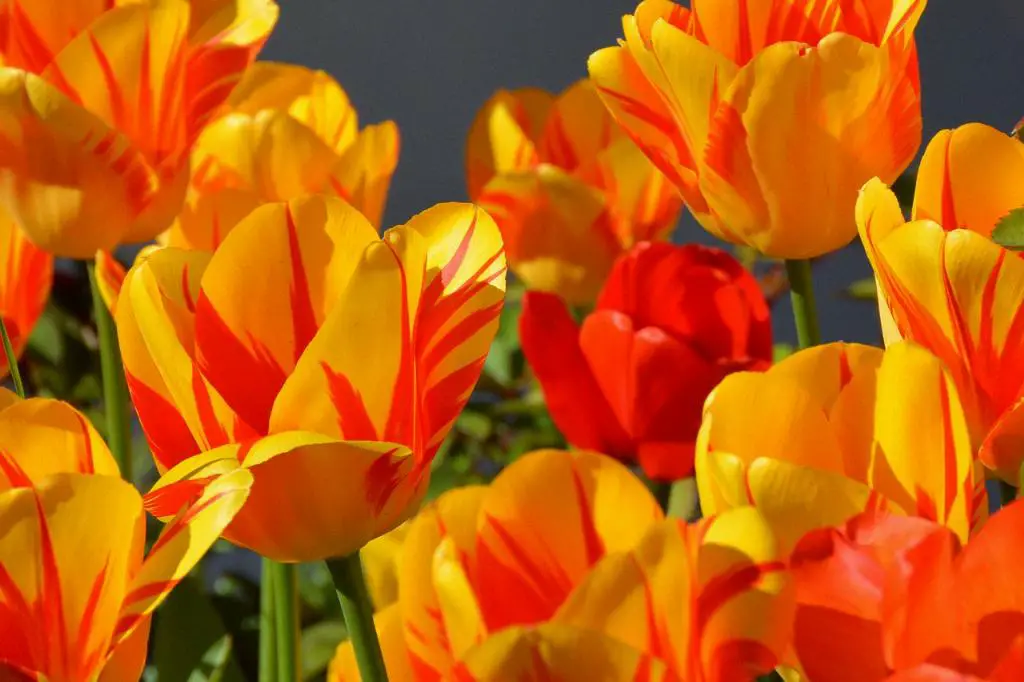One of the key factors in successfully growing stunning tulips is knowing when to plant them. Fall is the optimal season to plant tulip bulbs to ensure beautiful blooms in the spring. This is because the bulbs require a period of cold dormancy to produce vibrant flowers when the weather warms up again.
Timing for Planting Tulips
The ideal time for planting tulips is typically in the fall months. Different climates will dictate the exact timing. In colder regions (zones 3 to 5), planting in September ensures the soil has cooled off sufficiently. Transitional climates (zones 6 to 7) may find October to be the right time. In warmer areas (zones 8 to 9), November or December could be more suitable for planting tulip bulbs.
Preparing the Soil for Planting
Prior to planting your tulip bulbs, it is essential to prepare the soil properly. Choose a location with well-draining soil and sufficient sunlight for your tulips to thrive. Add organic matter like compost to improve soil quality and ensure good drainage. Avoid areas with standing water, as this can cause the bulbs to rot.
Selecting the Right Tulip Bulbs
When choosing tulip bulbs for planting, opt for large, firm bulbs that are free from mold or blemishes. These bulbs are more likely to produce robust flowers. Consider the variety and color of tulips you want to grow, as different types may have specific planting requirements or bloom times.
Planting Depth and Spacing
Proper planting depth is crucial for the success of your tulips. Generally, tulip bulbs should be planted at a depth that is three times the size of the bulb itself. Ensure that bulbs are spaced apart according to the recommendations for the specific variety you are planting to allow for adequate growth and air circulation.
Ensuring Adequate Watering
After planting your tulip bulbs, water them thoroughly to help settle the soil and initiate root development. While tulips do not require excessive watering, especially in well-drained soil, it is essential to keep the soil consistently moist during the initial stages of growth. Avoid overwatering, as this can lead to rotting.
Protecting Tulip Bulbs from Pests
Keep an eye out for pests like squirrels and rodents that may dig up and consume tulip bulbs. Consider using wire mesh or other physical barriers to protect the bulbs. Additionally, applying repellents or planting bulbs with daffodils, which deter pests, can help safeguard your tulips.
Maintaining Tulips During Winter
Once planted, tulip bulbs require minimal maintenance during the winter months. Mulch can be applied over the planted area to protect bulbs from extreme temperatures and fluctuations. This insulation helps keep the soil temperature stable and prevent damage to the bulbs.
Monitoring Tulip Growth in Spring
As spring approaches, monitor the growth of your tulips carefully. Remove any mulch once the weather warms up to allow shoots to emerge. Continue to water the plants as needed, but be mindful of overwatering. Proper care during the spring months will ensure healthy growth and vibrant blooms.
Deadheading and Pruning Tulips
Once your tulips have finished blooming, deadhead the flowers by removing the faded blooms. This prevents the plant from expending energy on seed production and encourages bulb growth for the next season. Avoid cutting back foliage until it has yellowed and withered.
Aftercare for Tulip Bulbs
After the tulip blooming season ends, allow the foliage to wither and turn yellow naturally. This process allows the bulbs to absorb nutrients for future growth. Refrain from cutting back or removing foliage prematurely, as this can impact the bulb’s ability to store energy for the next season.
Conclusion
By planting tulip bulbs in the fall, following proper care guidelines, and providing adequate maintenance throughout the seasons, you can enjoy a stunning display of vibrant tulips in your garden. Remember to plant at the right time, select quality bulbs, and ensure proper soil conditions for optimal growth and blooms.

